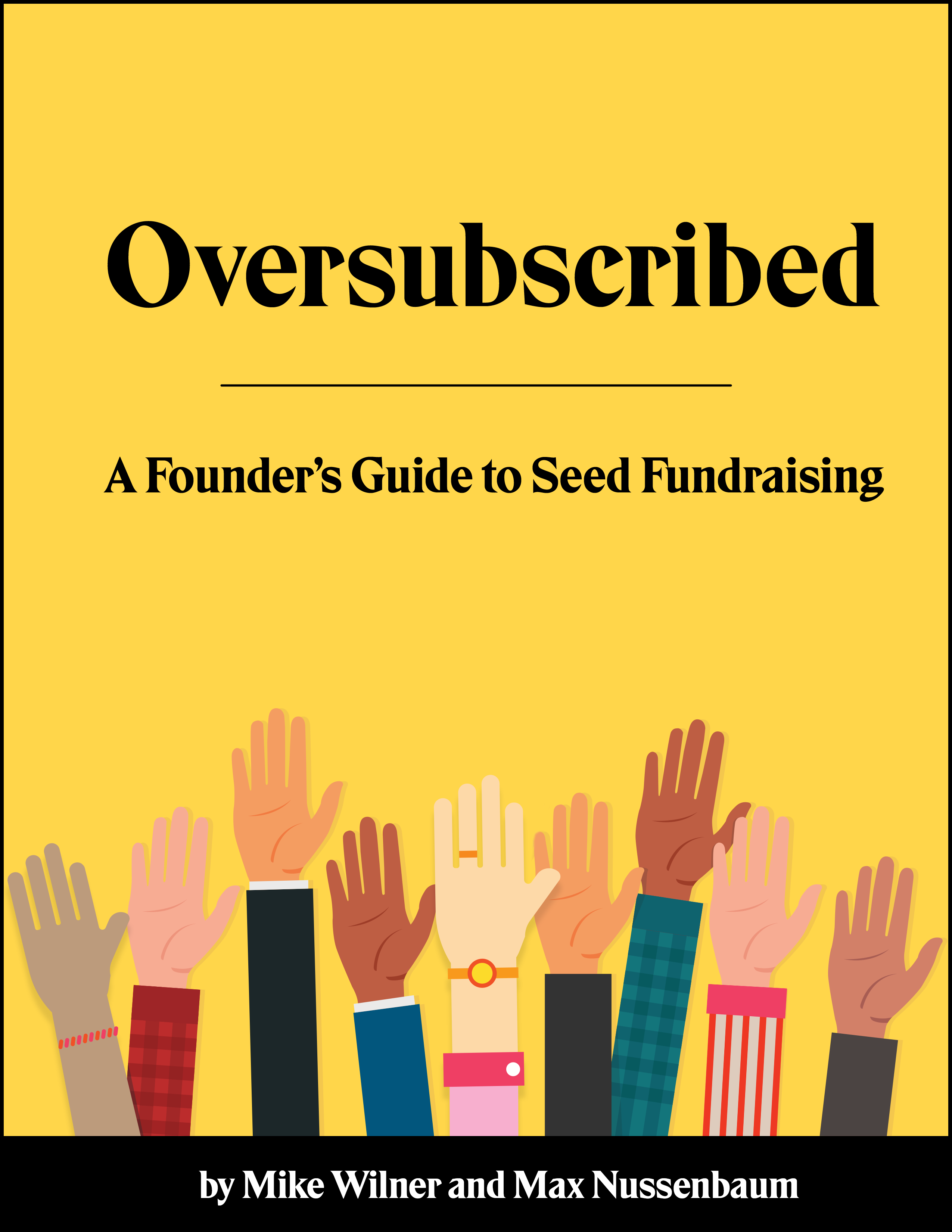Focus on de-risking your business (Oversubscribed Weekly #26)
June 12, 2019Mike here. In this week’s newsletter, I have my own mini-essay, a link to another essay you should ready, and twitter account you should definitely follow. Here we go.
Thinking about your future fundraising narrative and focusing on de-risking
Over the past few weeks, I’ve been giving talks about how to raise a seed round efficiently. Some folks who are not ready to raise a round have been asking me how they can close one quickly, which is a bit concerning. So, I wanted to take a step back and answer the question: how do you put yourself in a good position to raise a seed round in the first place? After all, step one in raising a seed round is having a funding-worthy business.
The truth is that being ready to raise a seed round has less to do with arbitrary “traction” milestones and more to do with milestones that significantly de-risk your business.
This can happen faster than you think if you focus on the biggest risks. Rather than reaching for arbitrary milestones that you pull out of thin air like $10K MRR, you should be thinking about what the biggest risks you are facing, and the most efficient way that you can have data that you’ve de-risked those parts of your business. After all, when it comes to revenue at the seed stage, there’s little difference between $5K MRR and $10K MRR – both round down to zero compared to what your future revenue numbers should be.
For example, If you’re building a workflow SaaS tool, the biggest risk is that your customers will adopt your tool into their workflow and use it consistently. Having 3 customers that have all of their employees using your product on a daily basis would prove that you’ve solved for that risk on a small scale. That is more impressive than having 20 customers that are paying you $500/m for your product and lacking the data to show that all of their employees are using it on a daily basis.
If you’re building a marketplace of any sort, the biggest risk is that you can power a critical mass of transactions in a market between buyers and sellers (AKA solving the chicken-and-egg problem). Finding a niche market where you’re powering 300 of 1000 weekly transactions (30%) is more impactful than powering 10,000 weekly transactions but being in so many markets that you’re only powering 3% of the total number of transactions in those markets.
If you’re building a consumer app, the biggest risk is that you can keep users engaged. Having 1000 daily active users that use your app obsessively is far more impactful than having 10,000 monthly active users, 100 of which use it daily.
Essentially, to put yourself in a good position to fundraise, ask yourself the following questions to think ahead about what your future fundraising narrative will need to be:
- What are the biggest risks that a business like mine faces?
- What kind of data will I need to show to demonstrate that I’ve de-risked the business?
- What’s the fastest way to get to milestone(s) that provide enough data that the business has been de-risked enough for investors to want in?
Note that sometimes answering that first question is the hardest. This is a great conversation to have with investors when you’re not fundraising.
If you try to fundraise before you’ve de-risked your business and pitch an investor, they’ll likely tell you to come back when you have more traction. What they really mean is, “this business has too much risk right now for me to think about investing, and I need this to be de-risked before I consider it.”
On the other hand, if you ask an investor what they think your business’s biggest risks are when you’re not fundraising, they’ll give you a very thoughtful answer which will tell you precisely what you need to de-risk before they would be interested in investing. Then, you can go and de-risk the business as cost effectively as possible (with time and money being the costs), and be in a position where you’re ready to fundraise.
A Good Read
How VCs Think: The Psychology That Drives Investing Decisions
Gigi Levy-Weiss, a Managing Partner at NFX, breaks down the psychology of VCs. Max and I were excited to see that he started with a rarely-discussed topic that’s vital for entrepreneurs to understand – VC’s incentives and motivations. He also delves into two psychological factors that entrepreneurs can use to their advantage: Fear of Missing Out (FOMO) – which Max and I talk about a lot – and Fear of Looking Stupid (FOLS) – a new one! He also outlines a three-step process to selling VCs which pulls on a similar thread of de-risking:
- Convince the VC you are low risk
- Prove that you have a huge potential
- Show the VC that others are very interested
A Good Follow
There’s a lot of value in following VC’s on twitter to get more comfortable with how they talk and think over time (assuming you can withstand the humblebragging).
One thing that Max and I have received criticism for – and have tried to remedy with mixed success – is having more diverse representation of VC voices in this newsletter.
Thankfully, Natalie Sportelli, who runs content and brand at Lerer Hippeau (and is a funny person to follow on Twitter), created the Twitter account By [women] VCs, which surfaces and amplifies content created by diverse voices in VC. It’s a welcome change from a twitter feed cluttered by men talking about how they almost invested in Uber. Give the account a follow.
Enjoy this? Get Oversubscribed in your inbox every Thursday.

